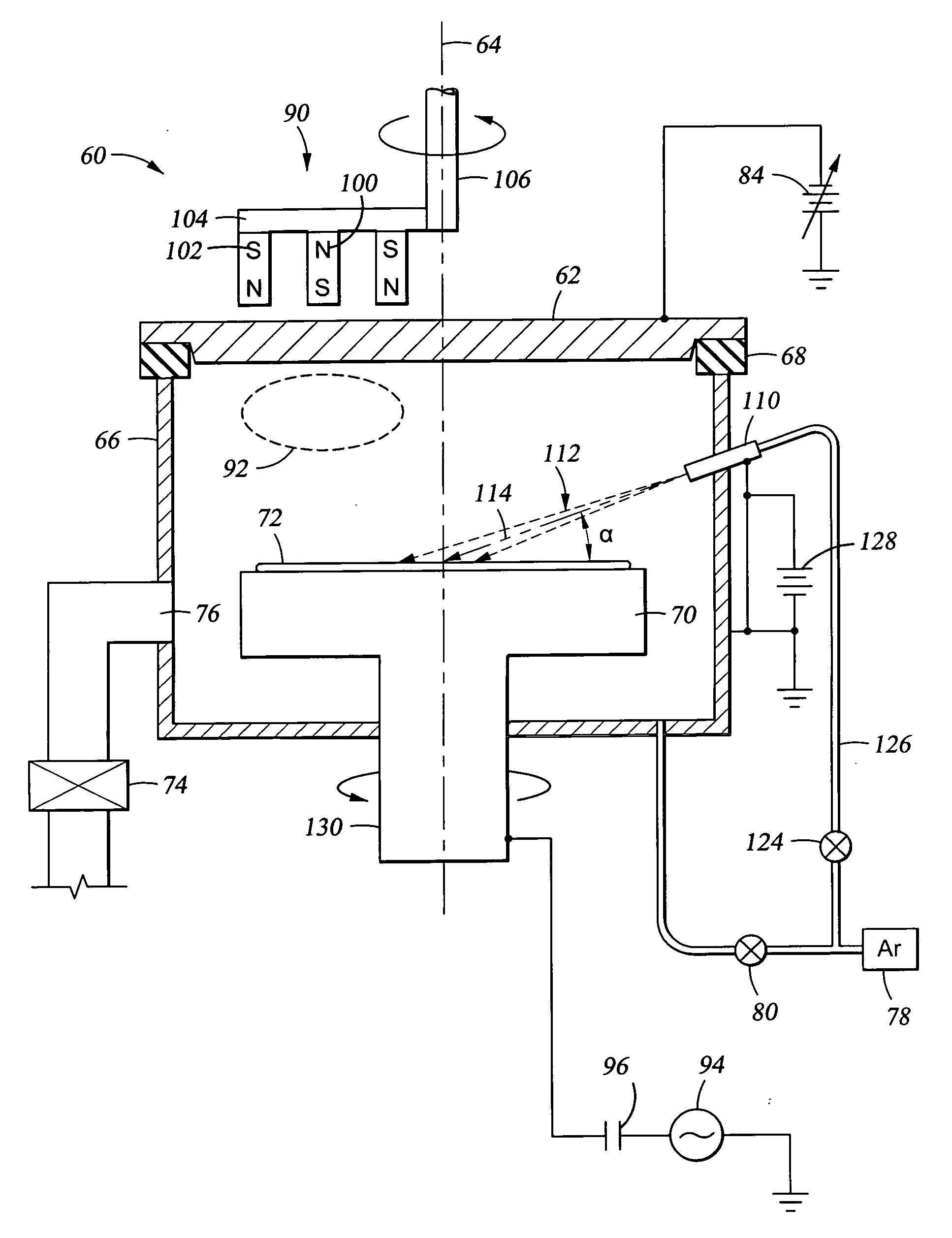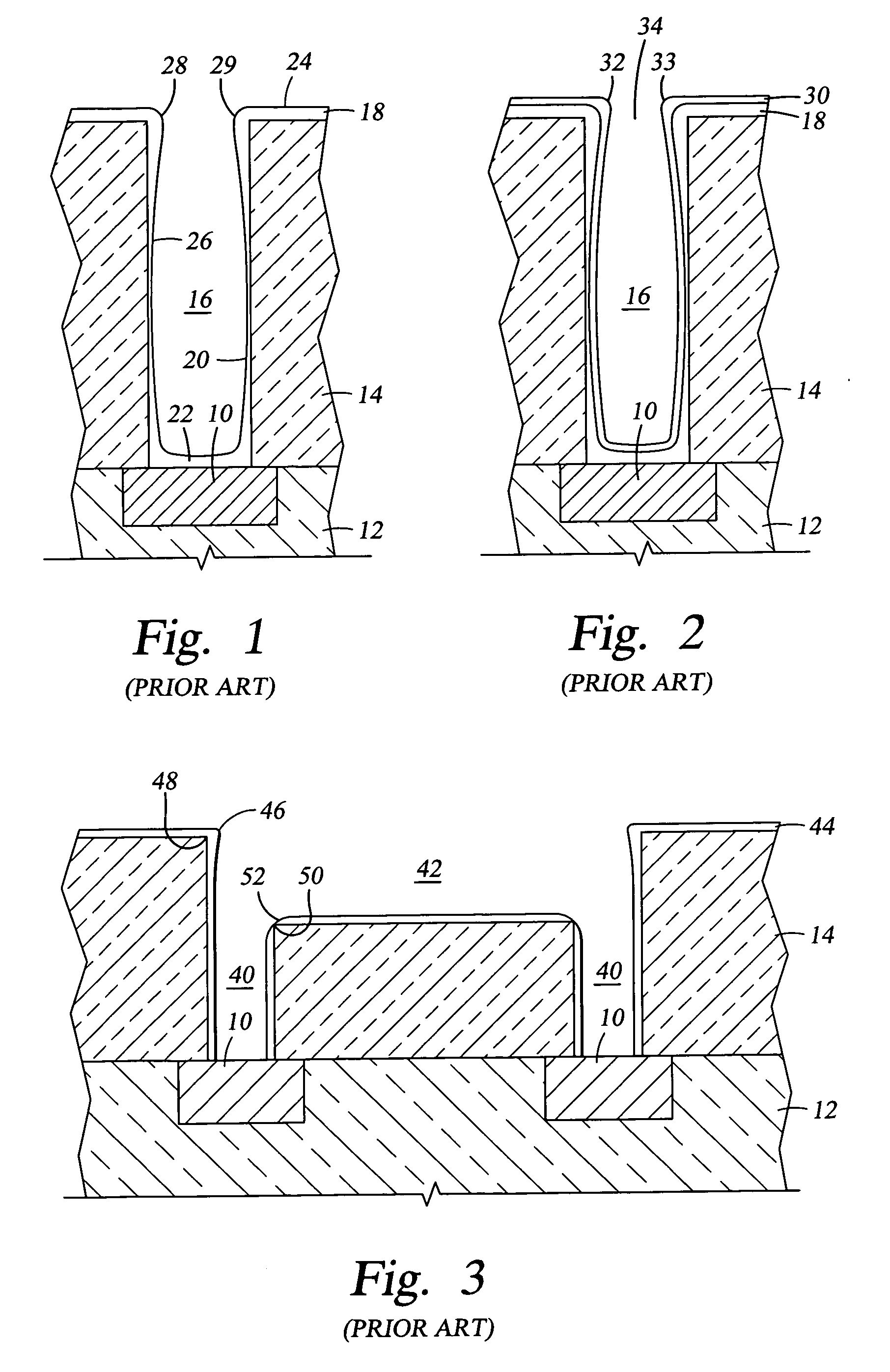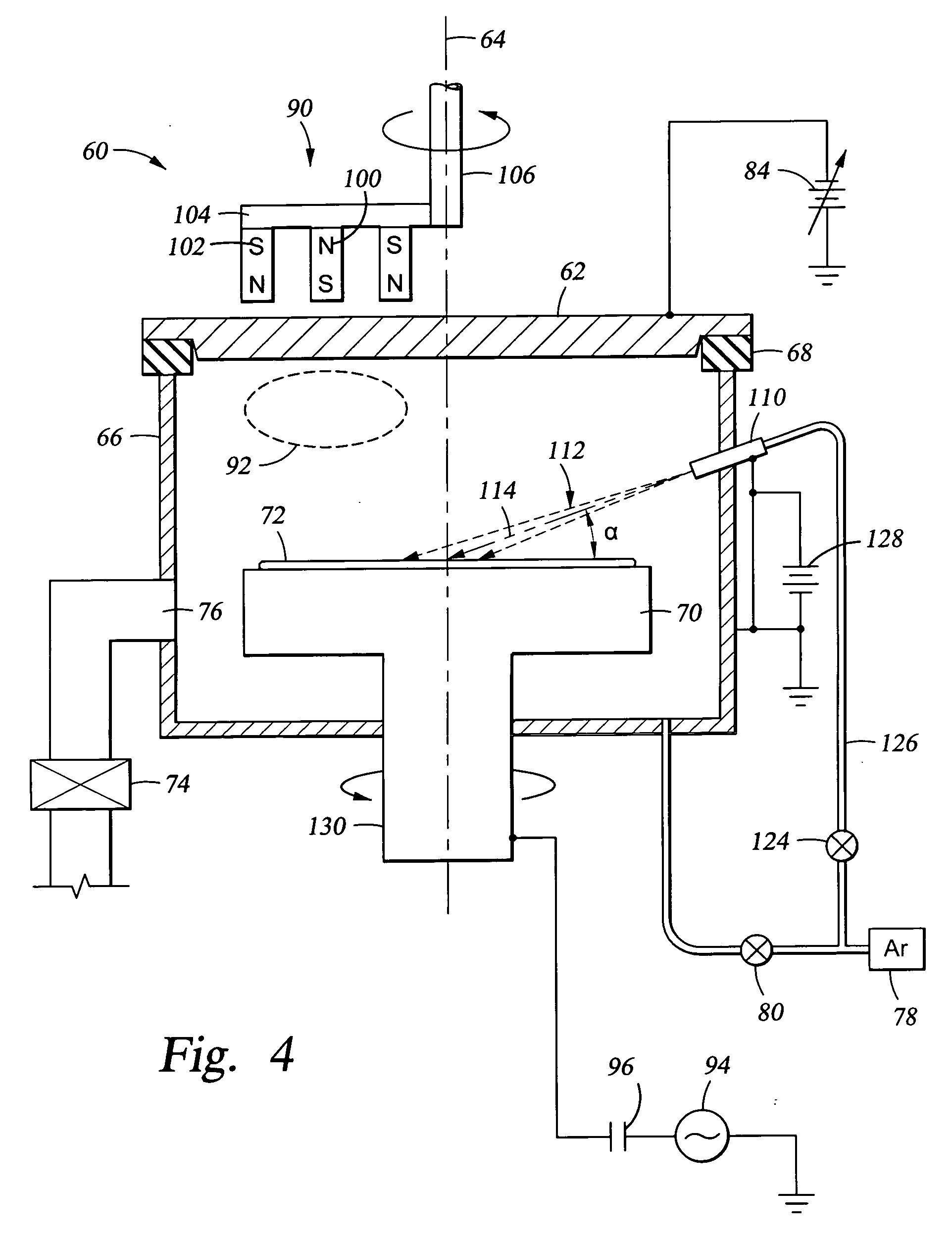Simultaneous ion milling and sputter deposition
a technology of sputter deposition and ion milling, which is applied in the direction of electrolysis components, vacuum evaporation coatings, coatings, etc., can solve the problems of copper not sticking well to oxide, difficult uniform sidewall and bottom coverage, and complicated situation, etc., to achieve uniform time-integrated beam intensity
- Summary
- Abstract
- Description
- Claims
- Application Information
AI Technical Summary
Benefits of technology
Problems solved by technology
Method used
Image
Examples
Embodiment Construction
[0029] One aspect of the invention improves upon an an embodiment of Gopalraja but uses a single linear ion beam directed at the diameter of a rotating wafer. A sputtering reactor 60 schematically illustrated in FIG. 4 is based upon a self-ionized plasma (SIP) reactor available from Applied Materials and includes many standard components of the commercialized reactor which will be first described. The plasma sputter reactor 60 includes a planar target 62 arranged about a central axis 64 and supported on a grounded chamber body 66 through an annular isolator 68. At least the surface portion of the target 62 is composed of the material to be sputtered, but copper targets are typically fabricated of solid copper. A pedestal electrode 70 supports a wafer 72 to be sputter coated in opposition to the target 62 along the central axis 64 and includes unillustrated chilling fluid lines and thermal transfer gas cavities for controlling the wafer temperature. Unillustrated shields, at least on...
PUM
| Property | Measurement | Unit |
|---|---|---|
| inclined angle | aaaaa | aaaaa |
| inclined angle | aaaaa | aaaaa |
| inclined angle | aaaaa | aaaaa |
Abstract
Description
Claims
Application Information
 Login to View More
Login to View More - R&D
- Intellectual Property
- Life Sciences
- Materials
- Tech Scout
- Unparalleled Data Quality
- Higher Quality Content
- 60% Fewer Hallucinations
Browse by: Latest US Patents, China's latest patents, Technical Efficacy Thesaurus, Application Domain, Technology Topic, Popular Technical Reports.
© 2025 PatSnap. All rights reserved.Legal|Privacy policy|Modern Slavery Act Transparency Statement|Sitemap|About US| Contact US: help@patsnap.com



